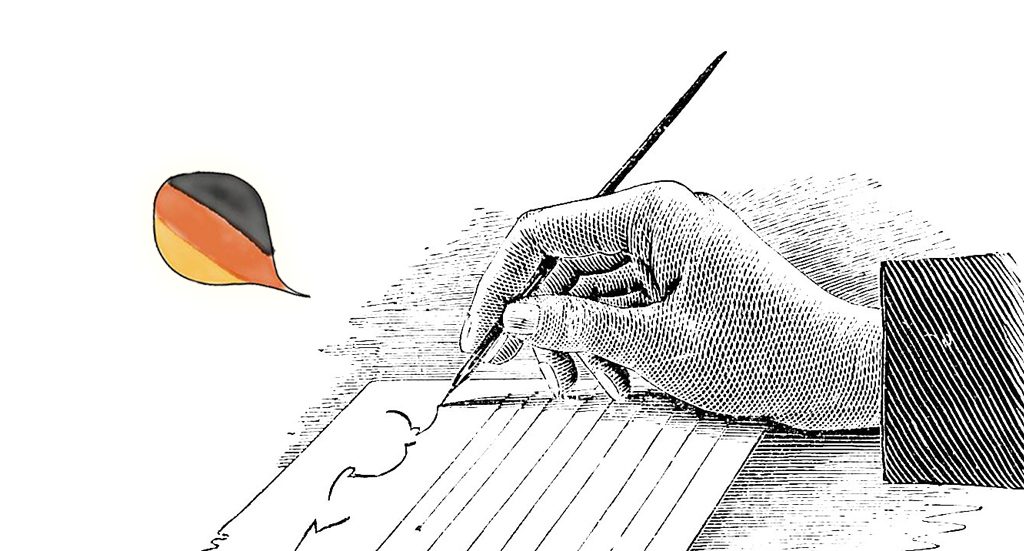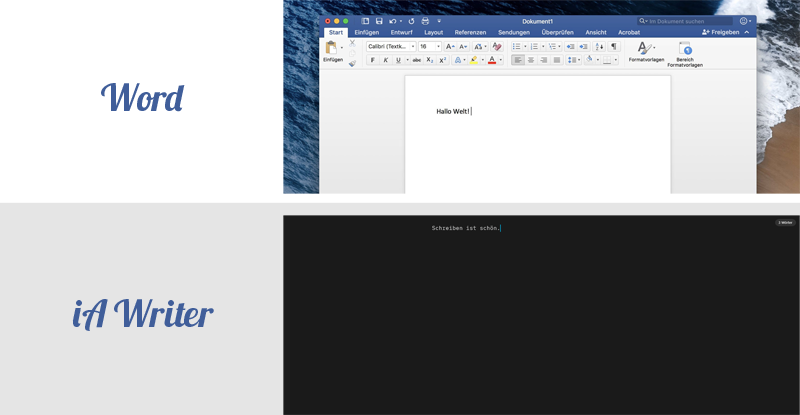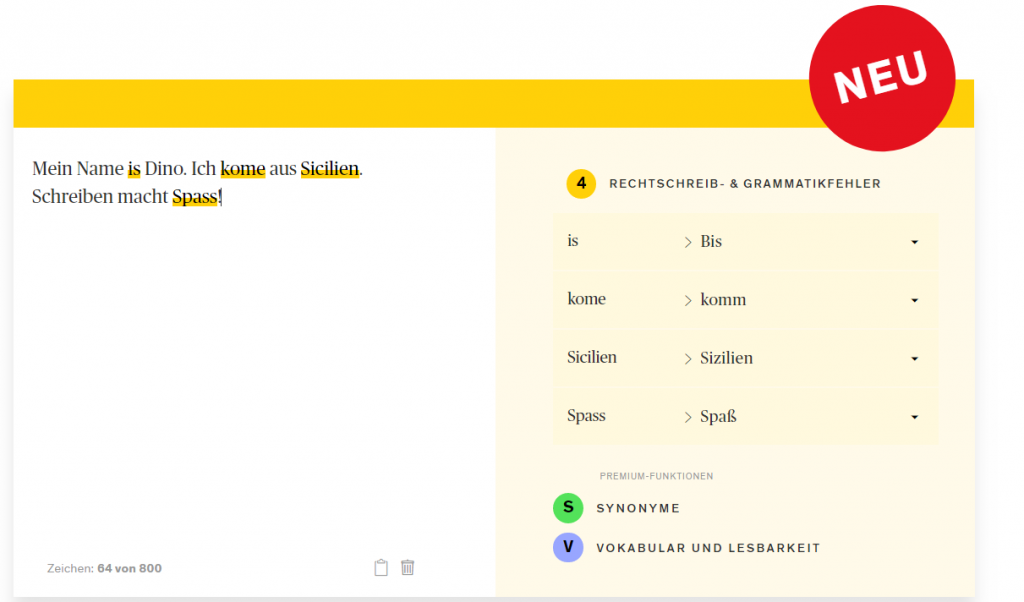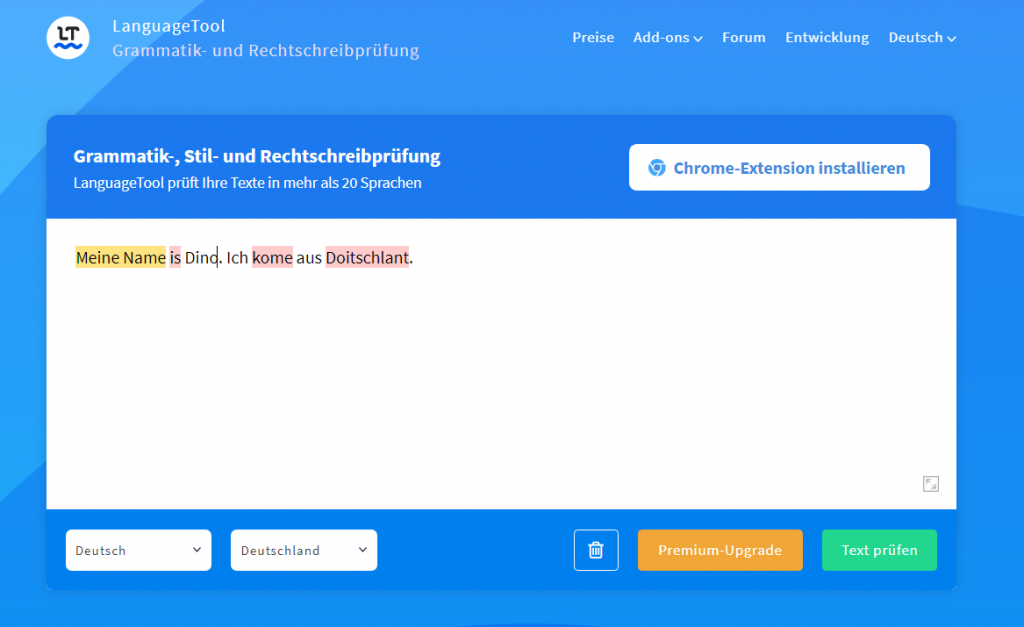There are many ways to learn German, and they all have their pros and cons. Obviously, I’m a huge fan of learning German with stories. I believe it’s one of the most fun methods of acquiring new vocabulary and making it stick.
But if you don’t regularly maintain your treasure trove (we actually call it that: “Wortschatz” — word treasure) of words, phrases and expressions the slow rot of forgetfulness sets in and your hard-won vocab is first relegated to low-priority mental storage and eventually fully dropped from memory.
A very popular and efficient method to refresh and maintain your vocabulary is by using the “spaced repetition” method, for example by using flashcards. That’s why I’ve recently added free Anki & Quizlet cards s for all books in the Dino lernt Deutsch and Baumgartner & Momsen series.

But there’s another often-overlooked way to thoroughly nail down your vocab: writing. That’s right, by making these random bits and pieces of foreign word material your own you charge them with meaning, thereby prolonging their expiry date. It’s like telling your brain: “Hey, don’t delete that, I’m still using it!”
“Ready, Set, … Write!”
So how would you go about writing in German? Well, you could start writing a daily journal for yourself, compose your own little stories, short poems, write an email to a German-speaking friend — it all works, as long as you’re committed, so make sure to choose a goal you know you can complete.
Start small and work yourself up by integrating this practice into your daily learning routine. Perhaps at first you’ll write only one or two sentences per day, then later you’ll set your daily goal to something like 200-300 words. For this practice to bear fruit though, you’ll have to do it regularly.
Today I would like to share some tools with you to help you get started (and excel in) writing in German. Ready? Los geht’s!
Distraction Free Writing Apps
Since social media, apps and notifications started taking over our lives, calm focused concentration can sometimes be hard to come by. When you have too many windows open, too many popups, buttons and badges clamoring for your attention it’s so easy to get distracted!
This is why for almost a decade I’ve been doing all my writing (at least first drafts) in distraction-free writing apps and have been recommending them whenever I get the chance.
These apps are the antithesis to full-blown word processors like Microsoft Word. They strip away all the buttons, menus, etc. and reduce the process of writing to its bare and beautiful essence: putting one word after the other.

Declare War On Clutter & Reclaim Your Focus!
There are many apps like that but my favorite is iA Writer. It’s available for Mac, iOS, Android and Windows. It’s not free but affordable. They do offer trials though. For an excellent free alternative check out WriteMonkey (Windows) which I’ve been using for many years or Typora (Mac).
Quick Spell-Checking
Especially for beginners the process of writing in German can be daunting. It’s natural to constantly second-guess yourself when it comes to spelling and grammar, but it also takes you out of the flow, so I wouldn’t worry too much about it. Your first priority should always be to express yourself in German!
Once you’ve written a few words, you can always use the Duden Mentor tool to quickly give you some feedback about your spelling. The free version is limited to 800 words, but will suffice for most practice texts.

But What About Grammar?
Ja, ich weiß — German grammar can be notoriously difficult and there aren’t many good options when it comes to grammar checking tools. In fact, the only one I can wholeheartedly recommend is LanguageTool.
The Chrome/Firefox Extension, Google Docs Add-On, Standalone, Libre/OpenOffice extensions are all free, but they also provide a premium Word add-on. I haven’t tested the latter but the core functionality is really excellent, recognizing more than 2500 (!) error patterns from punctuation, declension to capitalization rules.
So many rules, right? But you don’t need to … rule them all (sorry for that). Anyhow, many native speakers don’t seem to have the faintest idea about many of these either, at least that’s the impression I get from comments on Facebook and Twitter. For shorter texts you can also use the LanguageTool website, no need to install anything.

In this example, the tool correctly detected a grammatical incongruence (marked in yellow).
Style-Analysis & Statistics
Sometimes it can be helpful to analyze your writing, especially when your texts are getting more complex and you’re interested in polishing your style.
The Wortliga tool helps you avoid common issues such as over-use of passive voice, nominal style, impersonal language, overly long words, etc.
For a more quantitative statistical analysis, you can also use the Schreiblabor tool (edit: unfortunately defunct) to find out exactly how many syllables, words, sentences, etc. you are using.
Using AI tools
Last but not least, you can leverage AI tools like ChatGPT to help you with your German writing. And no, I don’t mean letting the AI writing everything for you, but it can be a very powerful tool for spellchecking, grammar, etc. And you could use creative prompts like:
“Please correct spelling and grammar in the following paragraph: [paste your text]”
“I’ve written a paragraph in German. Can you make it more concise? Here’s my paragraph: [paste your text]”
“How can I make the following text sound more/less formal/conversational? Please explain your suggestions. Here’s my text: [paste your text]”
–
Obviously none of these tools are magic bullets. If you want to improve your German writing it will take time and practice. Used judiciously however these tools can help you gain better insights into your writing and thereby slowly improve over time.
As I said before though, your first priority should always be the simple joy of writing, expressing yourself, making this new (and often confusing) language your own — word by word.
Have you incorporated a daily writing routine into to your German learning practice yet? How are you doing it, what tools do you find most helpful? Let us know in the comments.
–


